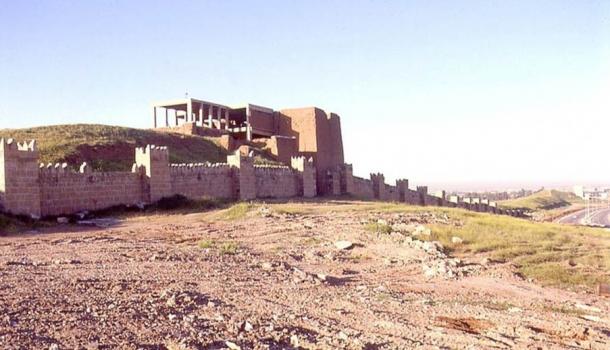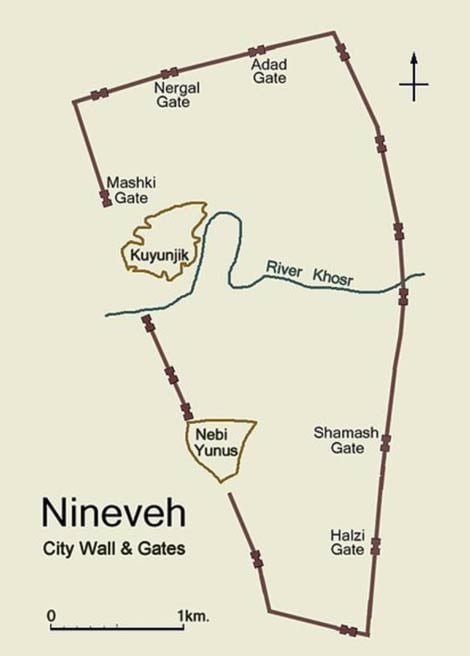
Militants of the Islamic State have destroyed a large portion of the ancient Nineveh wall in Mosul, which dates back some 2,700 years. The tragic loss adds to a series of archaeological, historical, and religious sites of great historical value that have been reduced to ruins.
The Assyrian International News Agency (AINA) reported last week that the militants used explosives to blow apart the wall located in the al-Tahrir region on the left coast of Mosul. “ISIS militants blew up today large parts and expanses of the archaeological wall of Nineveh,” media official of the Kurdistan Democratic Party (KDP) in Mosul, Saed Mimousine, told IraqiNews.com last Tuesday. “The Wall of Nineveh is one of the most distinctive archaeological monuments in Iraq and the Middle East,” he added.


- See more at: http://www.ancient-origins.net/news-history-archaeology/tragedy-militants-bomb-2700-year-old-nineveh-wall-iraq-002632#sthash.OBNBaC4d.dpuf

View of Adad Gate at Nineveh from the North. (Wikimedia Commons) Nineveh (modern-day Mosul, Iraq) was one of the oldest cities in antiquity, having been settled as early as 6000 BC. By 3000 BC, it had become an important religious center for worship of the goddess Ishtar. Under the reign of King Sennacherib (704 – 681 BC), the city grew dramatically in size and grandeur, who made Nineveh capital of his Assyrian Empire. Sennacherib ordered the construction of a massive protective wall around the city, measuring around 7.5 mile (25 km). Inside, he built aqueducts, irrigation canals, public gardens, and spectacular monuments. Simplified plan of ancient Nineveh showing city wall and location of gateways. Image created by Fredarch. (Wikimedia Commons)

The wall consisted of a 6 meter (20ft) high stone retaining wall surmounted by a 10 meter (33ft) high and 15 meter (49ft) thick mudbrick wall. The wall had projecting stone towers spaced about every 18 meters (59ft), and fifteen monumental gateways, which served as checkpoints, barracks, and armories.
The bases of the walls of the vaulted passages and interior chambers of the gateway were lined with finely cut stone orthostats about 1 meter (3ft) high. To date, only five of the fifteen gateways have been excavated by archaeologists. Assyrian wall carving of horses and grooms. From Nineveh, South West Palace, 790BC - 592BC. In the British Museum. (Wikimedia Commons) Nineveh was the largest city in the world for some fifty years, until a period of civil war in Assyria, in which a coalition of Babylonians, Medes, Persians, Chaldeans, Scythians and Cimmerians sacked the city in 612 BC, leaving much of it in ruins.
The remains of the wall and city have laid there ever since, standing as a lasting reminder of the once great city of Assyria. However, when militants captured Mosul in June last year, they proceeded to destroy shrines and tombs important to Christians and Muslims because they allegedly “distort Islam.” The destruction of part of the Nineveh wall is the culmination of many such attacks on historic monuments in the city.
Credit to Ancient origins.net
- See more at: http://www.ancient-origins.net/news-history-archaeology/tragedy-militants-bomb-2700-year-old-nineveh-wall-iraq-002632#sthash.OBNBaC4d.dpuf
No comments:
Post a Comment